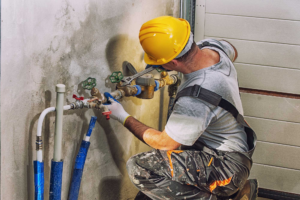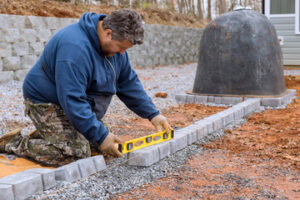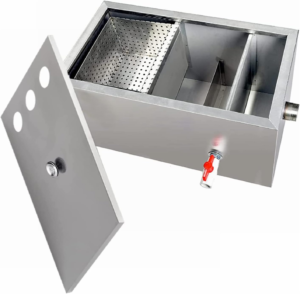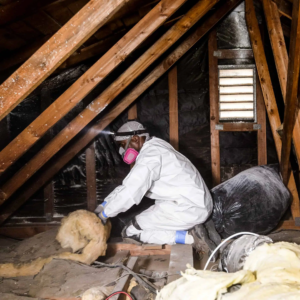Your roof is your home’s unsung hero, shielding you from the elements year-round. If you notice signs of wear and tear, catching them early can save you from costly repairs or even a roof replacement down the road.
Visually inspect your roof for any shingles that are missing or cracked. Also check the attic for water stains or damp insulation. Click the Roof Repair Erie PA to learn more.

Shingles are prone to damage from exposure to extreme weather conditions and general wear and tear over time. Fortunately, this type of damage can often be repaired by replacing loose or damaged shingles. GR Construction USA recommends regularly inspecting the roof and addressing any minor issues promptly to avoid more serious problems.
Loose shingles should be removed immediately, as this is one of the most common causes of roof leaks. When a shingle is loose, water can seep underneath and cause further damage to the roof deck and attic.
To remove a loose shingle, begin by loosening the shingles above it with a pry bar. Then, carefully remove the shingle and its nails. Be sure to inspect the area for any other loose shingles and secure them as well.
When a shingle is damaged, it may exhibit cracking, blistering, or a loss of the ceramic granules that protect the shingle from UV damage. Cracking is a common sign of age and wear and tear, but can also be caused by weather exposure, changes in temperature, or dryness over time. Blistering is a severe form of damage that looks like bubbles on the surface of the shingle and indicates that the granules have been lost, leaving the shingle vulnerable.
Bruising is another condition that causes damage to shingles, and it occurs when debris is dropped onto the roof and damages the surface of the shingle. This can compromise the shingle’s waterproofing abilities and needs to be replaced as soon as possible.
Aside from repairing shingle damage, regular inspections can help extend the life of your roof. This includes removing debris, checking the flashing around chimneys, vents, and skylights, and looking for any signs of water infiltration. When you notice any of these problems, it is important to take action right away, as failing to do so can lead to further damage and expensive repairs. For this reason, it is essential to schedule routine roof maintenance with an experienced roofing contractor. GR Construction USA can inspect your roof, identify any potential issues, and provide you with a complete roof repair solution.
Leaks
While water dripping from the ceiling is the most obvious sign of roof damage, it’s not the only one. Water can also seep into walls, creating mold and mildew and damaging insulation. If the leak is severe enough, it can lead to rotting of the frame and foundation of your home. If you think you have a leak, there are several steps you can take to try and identify and repair the problem.
Look for signs of moisture in the interior of your home such as water spots on the ceiling or walls, discolored patches, peeling paint around windows and doors, a musty smell in certain rooms, and rotted framework wood. Leaks can also be caused by broken, missing or cracked shingles, loose flashing, and clogged gutters or downspouts.
If there are no obvious signs of a leak, check your attic with a flashlight and make sure the insulation isn’t damp or stained. If there is a leak, it will often be near things that go through the roof such as dormers, chimneys, vents, and skylights.
Once you’ve located the leak, it’s time to start repairs. Remove any shingle or other debris that has been lying on the roof, then clean the area and apply roofing cement. For larger holes, you’ll need to use a sheet of rubberized patching material such as this.
It’s important to find and repair leaking areas as soon as possible because moisture can do serious damage to your walls, floors, and furniture. If the leak is bad enough, it can even cause your foundation to crack and sink, which can have a dramatic effect on the value of your home.
Unless you’re comfortable climbing onto the roof, you should always leave leak repairs to professional roofers. However, there are some quick, temporary fixes that you can do yourself. You can seal small leaks with a bitumen-backed flashing tape, such as this Selleys product. It can be found at most hardware stores, but if you’re unsure of how to apply it or you have a large hole in your roof, it’s best to call in a professional.
Water Damage
A leaking roof isn’t just an inconvenience for homeowners. Water can seep into the walls, ceilings, foundation and home systems, causing serious damage in the long run. It’s important to act fast and call in a professional for emergency roof repair if you notice visible signs of water damage.
Check for puddles and damp spots inside the house, especially in attics and crawl spaces. Use a flashlight to look for any soft or moldy areas that indicate the source of a leak. If the problem isn’t as severe, it might be possible for homeowners to fix it themselves. For more complex or major issues, it’s always a good idea to consult with a roofing pro.
Water infiltration can lead to a number of problems, including mold and mildew, which can be very harmful to people with allergies, asthma or other respiratory conditions. It can also cause structural damage to joists, rafters and trusses. It’s a major issue that should be addressed as quickly as possible to minimize the damage and prevent more expensive repairs in the future.
The most common entry points for water are holes, loose shingles and damaged seams around vents and soffits. If you have a leak, clear away any moisture and cover the area with a tarp or shingle patch until it’s repaired. For leaky seams, apply caulk for a temporary fix.
Leaks can also occur in the dormers and other dormer-like areas of a roof, and are often caused by step flashing or chimney flashing that has deteriorated. These are short sections of overlapping “L”-shaped flashing that channel water over the shingles and downhill from them. It’s easy to replace a damaged piece of step flashing by carefully loosening the shingle and siding, then sliding in a new section of flashing and using roof cement to secure it.
Leaks from the pipe collars and base flashing are more complex to repair, because they require removing the existing flashing and surrounding shingles. In many cases, the entire assembly needs to be replaced, and it’s usually best for a professional to handle this type of roof repair.
Storm Damage
When the weather turns sour, a property owner must be prepared to protect his home from damage caused by heavy rain, hail, and strong winds. The roof is particularly vulnerable to these events, so it’s important to know how to spot storm damage and act quickly to prevent further problems.
If you notice any of the tell-tale signs of damaged shingles or roof leaks, it’s time to call for a professional inspection. However, be careful not to go outside until you’ve received the all-clear from local authorities. Additionally, it’s important to avoid unscrupulous “storm chasers” who may approach your house after a storm and offer free inspections or repairs.
While a storm can damage any part of your property, it’s important to prioritize safety and take temporary measures to protect the most vulnerable areas until a professional can make permanent repairs. These steps can include patching leaks, securing loose shingles, and covering exposed sections with tarps to prevent further damage. It’s also a good idea to create an inventory of all the storm-related damage, as this information will be helpful when filing an insurance claim.
The most common types of storm damage are caused by wind, hail, and falling debris. These issues can compromise the structural integrity of a building and leave a property at risk for leaks, water damage, and more.
Damage from hail can cause dents and cracks in the roof, as well as windows and doors that break under the force of the projectiles. This type of damage often goes unnoticed because it’s hard to see from the ground, but these problems can worsen over time and weaken the structure.
Even the most severe damage from a storm can be repaired through proper maintenance and an adequate homeowners insurance policy. Our associates are experienced with working with homeowners’ insurance companies to get the maximum reimbursement for your storm damage repairs. In addition, we provide preventative maintenance services to help you reduce the risk of costly repairs in the future. Call us to learn more about our services and how we can help you save on your next storm-related repair.








